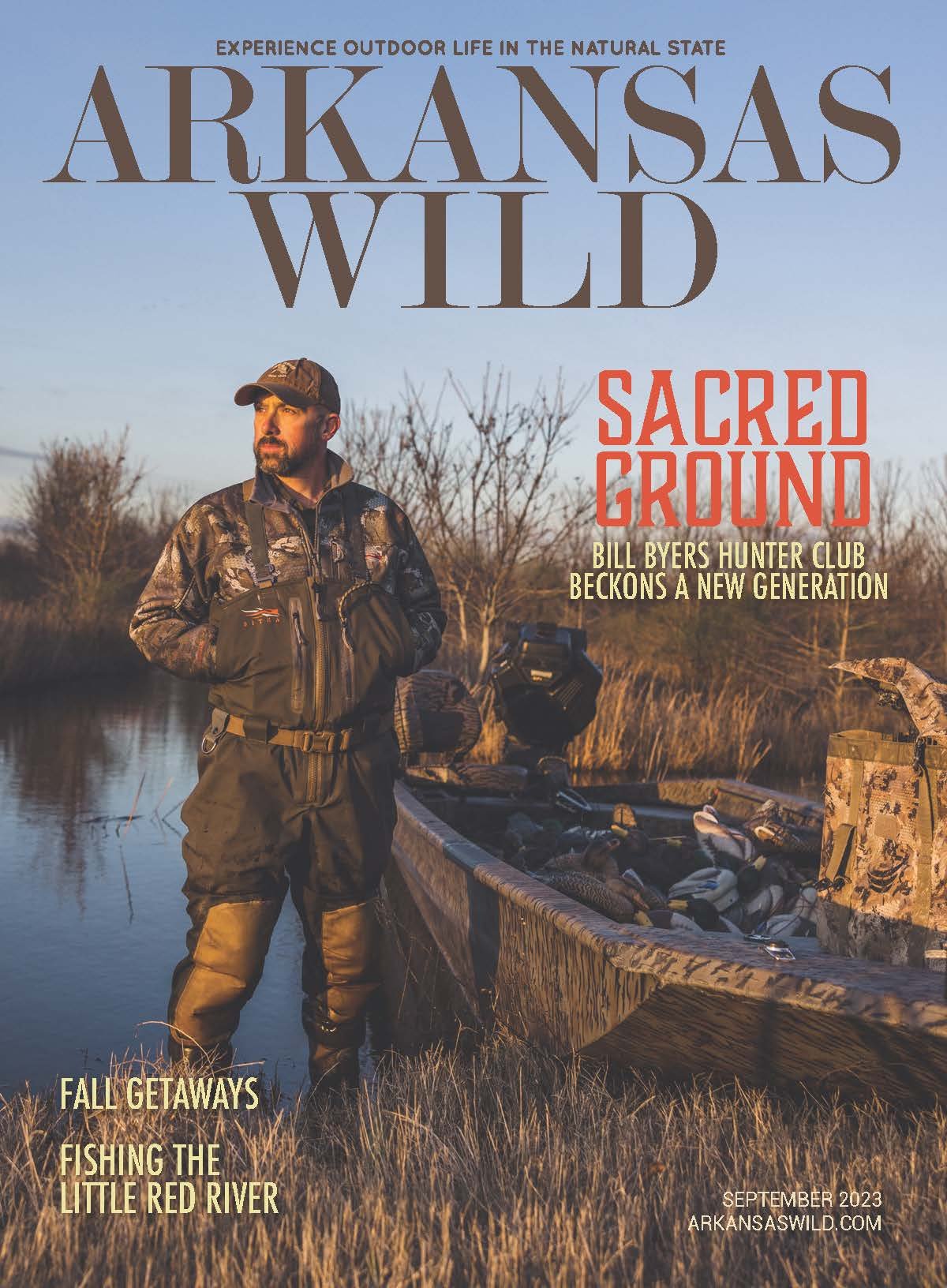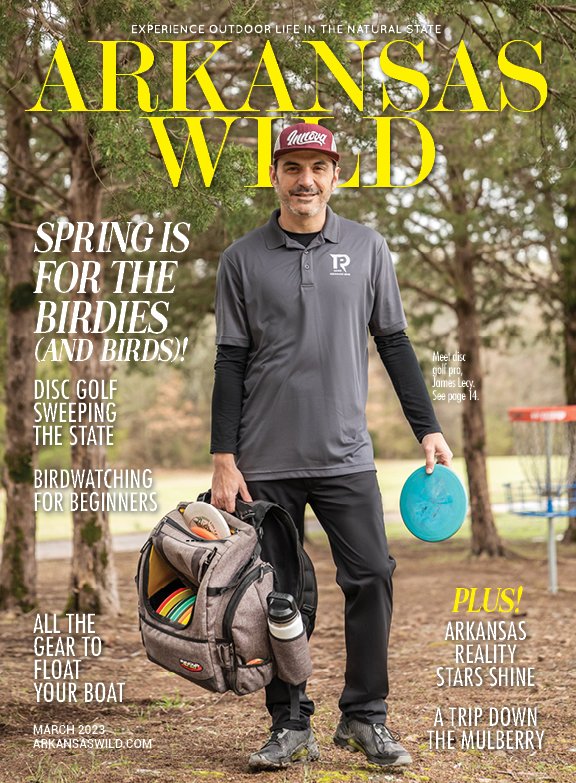Get Your Feet Wet
Fly-Fishing for beginners
By Jill Rohrbach
Learn the basics to start enjoying Arkansas’s trout waters. - Photo Courtesy of: Arkansas Department of Parks and Tourism
For some, the most difficult part of fly-fishing is the cast. For others, it’s learning what flies to use or how to present them in the water. Regardless of which part you find challenging, the reward for learning is time well-spent in nature.
Gear
“The classic trout fly rod is a five-weight,” says Steve Dally, manager and guide at Dally’s Ozark Fly Fisher in Cotter. “If you want to do a little more smallmouth bass fishing you might want to choose a six-weight. They’re both going to be 9 feet long. That is the standard length. It works best for the most people.”
Buy the best rod you can afford and quality fly line. Look for a rod with a repair program; rods break for various reasons and the cost of a rod isn’t as daunting when for nominal cost it can be repaired. Dally says the fancy hat, wooden net and vest can come later; the pocket on your waders holds most things you will need, and if you’re fishing from a boat you won’t even need the waders.
“Our biggest-selling outfit sets you back about $170,” says Dally, including rod, reel, fly line and leader. “All you need are some flies and water and you can go fishing for some trout.”
Learning to Cast
“Knowing how to cast is essential to success on the river,” John Sturgis, Arkansas Trout Unlimited Council chairman, says. “It begins with hand position and balanced grip, using your thumb to accelerate weighted line.”
Fish Friendly
Safe handling of trout is one of the most important pieces of information for the beginning angler. Key tips include:
•Keep the fish in the water as long as possible; only take it out to remove the hook and take a quick photo.
•If the hook is embedded in the fish, cut the line and release the fish. Don’t try to rip the hook out. Many fish can survive, and later pass, a hook that is embedded.
•Don’t play the fish for an excessive amount of time. Land it as quickly as possible and release.
•If fishing during the spawning season, avoid trampling on redds, which are areas of cleared gravel where brown trout spawn.
With a spinning rod, you cast the heavier lure or bait to zing your line out. With a fly rod, the weight of the line carries the line out to deliver the practically weightless fly. Trout Unlimited chapters and fly shops often hold clinics for fly casting, fly tying and river fishing instruction.
Practice casting in your yard in calm and windy conditions. Ponds are a good place to practice as well. “Getting to be a really good caster takes time,” Dally says.
Knots and Flies
The surgeon’s knot and clinch knot are the two most popular for fly anglers. The internet and YouTube are full of educational videos by fly-fishing experts teaching the fine art of tying.
Your local fly shop is the best place to ask questions about how to fish certain flies. When headed to a river, stop in the nearest fly shop and ask what the fish are biting on as it can change from day to day or with the seasons.
Safety
Sturgis says it’s important to wear eye protection and sunscreen. He also advises wearing a wading belt to minimize filling your waders with water, which in a worst-case scenario could result in hypothermia or even drowning.
When fishing cold trout waters below Arkansas dams, be aware of water generation. Water flows are driven by hydro-electric demand and flood control. Listen for a horn to blow when generation starts. Always be aware of water depth and move to the bank if you see the water is rising. It can happen quickly and you don’t want to get caught in a swift current on the wrong side of the river.
Regulations
“It is very important for all anglers, regardless of whether they are just beginning or not, to familiarize themselves with the regulations for a particular fishery,” says Christy Graham, Arkansas Game and Fish Commission trout management program supervisor. “Trout regulations differ across the state, so folks should always check to see what regulations apply to the area they are going to fish.”
Size limits restrict anglers to the harvest of particular sizes of trout. Harvest limits restrict anglers to the number of trout they can keep during a trip. Tackle restrictions limit anglers to certain types of tackle in certain areas. There are also trout waters with special regulations such as catch-and-release areas, restricted to artificial tackle with barbless hooking points.
Complete AGFC fishing regulations can be found online at www.agfc.com/en/fishing/general-fishing-regulations/.



